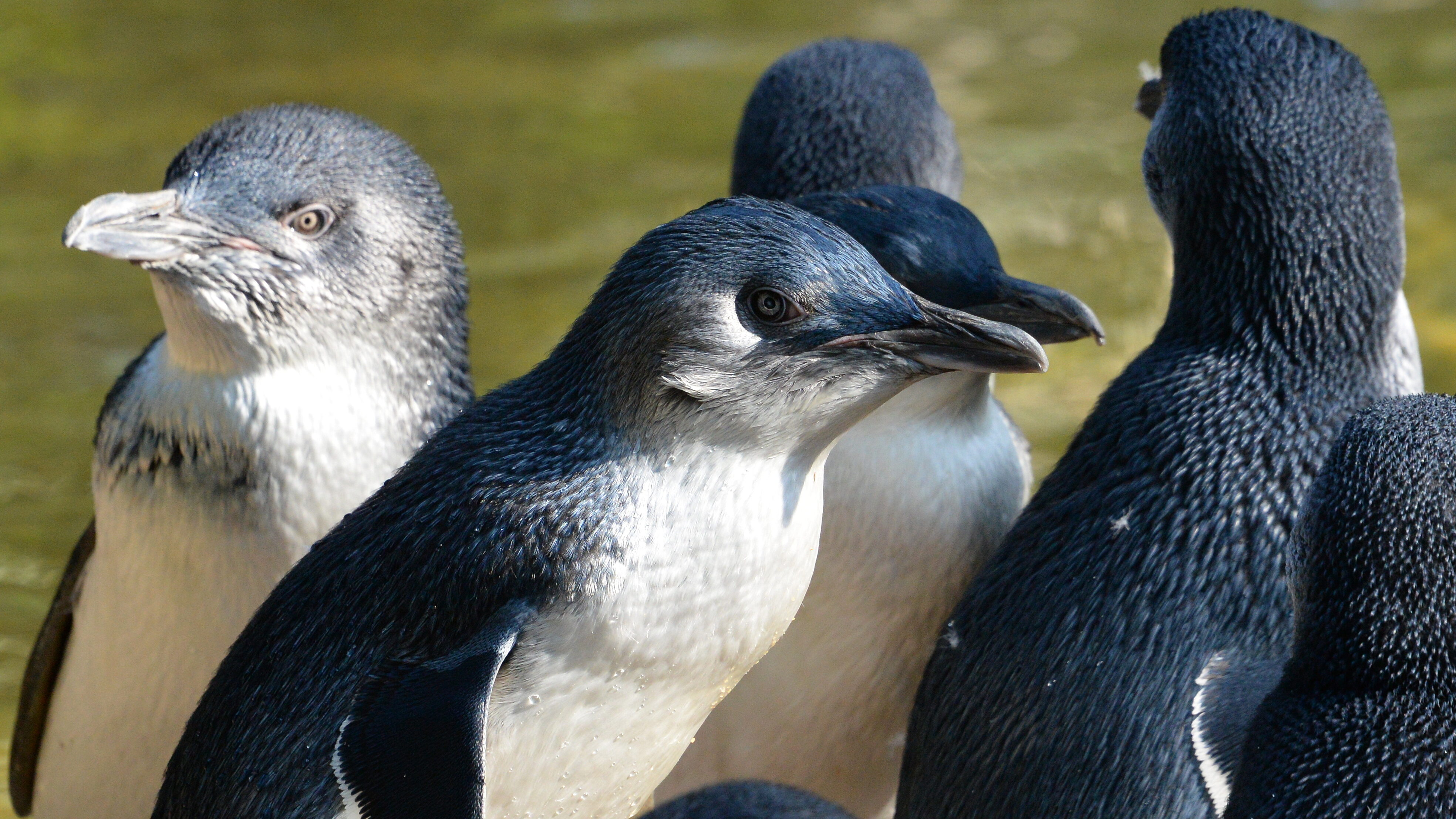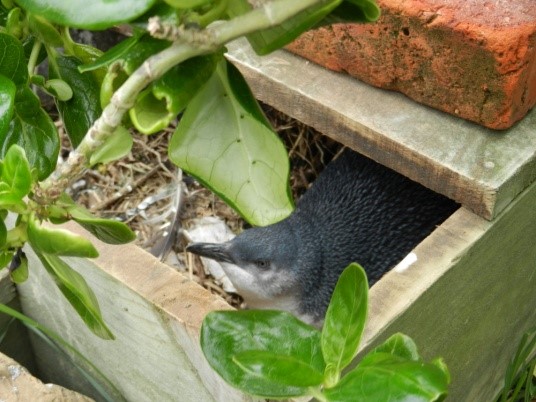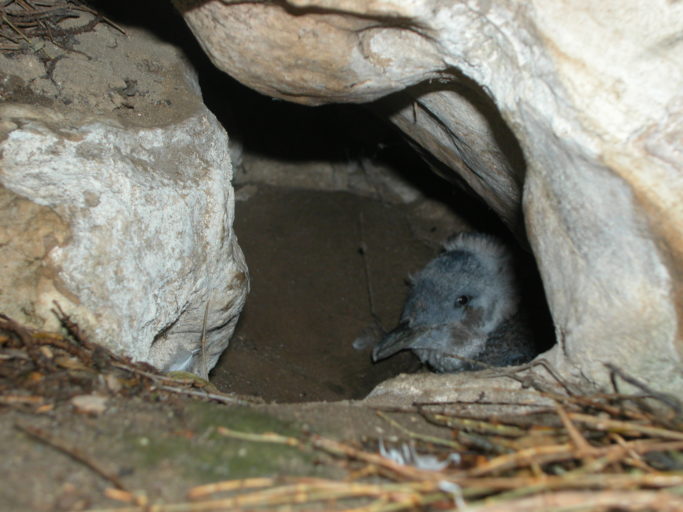Little penguins in Kaikōura have been doing their bit to try and keep species numbers buoyant – with multiple nesting per breeding season and some birds even resorting to a bit of partner-swapping. It all helped bring successful fledgling numbers up to 1.66 chicks per pair, according to researchers, Lindsay Rowe, Jody Weir and Alastair Judkins, who followed the soap opera of who was hitching up with who for 11 successive breeding seasons.

There are believed to be two clades of little penguins in New Zealand – that is, two separate lines of lineal descent. The researchers explain:
“There is continuing uncertainty about the taxonomy of little penguins, and hence, all little penguins including the white-flippered morph have been placed into a single species, Eudyptula minor, awaiting clarification. Recent research using mitochondrial DNA variation has determined that little penguins can be separated into two clades, the first being birds from Australia and south east New Zealand (ASENZ) and the second being mainly New Zealand Only birds from Banks Peninsula north (NZO). Double brooding and rafting are considered traits of the Australia-Southeast NZ clade only.”
As well as monitoring breeding success, the researchers observed behavioural patterns to see how this compared with the known behaviour of the two penguin clades.
Kaikōura’s little penguins have had to adapt to all kinds of human-induced change in recent years.
“The main concentration of little penguins on the Kaikōura Peninsula is at South Bay on the southern side of the peninsula although in later years there have been isolated instances of penguins breeding on the north side of the Kaikōura Peninsula under roadside protection boulders and under a house. Until the mid-1990s, penguins at South Bay nested under boat sheds and houses, in gardens and hedges. The boat sheds were gradually removed and the Kaikōura District Council built a new seawall and jetties. Birds that once nested and moulted under the old boat sheds began seeking shelter under houses and were prone to disturbance by household pets.”
Luckily there were some locals prepared to stand up for the little blues.
“As a consequence of local residents voicing concerns about a perceived decline in penguin numbers, the Department of Conservation (DOC) built a shelter in 2002 in which were placed multiple nestboxes created from inverted fish crates with a hole cut in one end. Penguins began to breed there, as well as under the local Coastguard building, in the new marina boulder bank and in the boat park shrubbery.”
The little penguin is considered to be a species of “least concern” (BirdLife International 2018) but under the New Zealand Threat Classification it has recently been downgraded within the “At Risk – Declining” category, so it was important to monitor how local penguins were coping with the changes in their breeding sites. The Kaikōura colony faces a number of threats associated with living near humans.
“There are multiple threats to the survival of this colony. The boat park is used extensively each day by commercial and recreational fishers, tourism operators, charter fishing boats, and the Kaikōura Coastguard is headquartered there. The area is also used by people for recreation, mainly walking around the Kaikōura Peninsula. Predators, mainly dogs, have killed penguins in the area including three banded study birds in one night and cats have been seen near nests.”
Lindsay Rowe began to study the little penguins at South Bay, Kaikōura in 2006, to determine the subspecies present, how many birds were present, and how successful they were at breeding.
“While little penguins are known to have multiple broods in a season, in New Zealand it has been reported that outside Otago little penguins do not double brood. Here, we report on breeding by little penguins at the South Bay colony, Kaikōura, including replacement clutches and multiple brooding and how the Kaikōura birds might fit into the two-clade scenario.”
The research team also did what they could to protect the penguins from some of the threats they faced.

“Penguins nested in a variety of habitats: deep amongst boulders at the Marina where they were subject to splash during high storm tides and near the DOC shelter; under vegetation including flax at the Boat Park and DOC shelter, and under the Coastguard building. From winter 2008, purpose-built nestboxes were placed over nests found in vegetation, at the top of the Marina boulders and under the Coastguard building. These gave the penguins some protection from predators; no nest desertion happened as a result and penguins have renested in some nestboxes every year for 12 seasons until 2019-20.”
For 11 years, from 2006 on, visits to the colony were made roughly once every week (with the occasional break in winter).
“Most visits were made at dusk to record birds already present at the colony, which birds came in, and the numbers of eggs and/or chicks present at each nest. Unique numbered stainless-steel flipperbands obtained from DOC were applied to all adult birds found and to chicks about to fledge. Passive integrated transponder (PIT) tags were implanted in the necks of adults from December 2008. PIT tag readers at tunnels into the Coastguard building and the DOC shelter allowed movements of birds to be recorded at those sites between the weekly visits. All observations reported here were of pairs of banded birds on nests or in nestboxes, and the bands were read every visit to confirm which birds were on which accessible nest.”
The following definitions cover the variety of nesting situations encountered:
• a successful clutch is one where at least one chick fledged;
• a single clutch is one set of eggs produced by a breeding pair in a season (which starts after moulting has finished – 1 April);
• a replacement clutch refers to a failed first clutch followed by a second clutch by the same pair which may or may not have been successful;
• a successful double brood is two successive clutches by the same pair with one or two chicks fledged from each;
• a failed double brood is two successive clutches by a given pair with one or two chicks fledged from the first and no chicks from the second laying;
• a triple brood has three successive successful clutches in the same season.
Banding showed 30-40 adult little penguins present at South Bay, including non-breeders and those only seen sporadically. Most were the “normal” blue penguins with little, if any, white on the edge of their flippers.
“There were 106 known clutches from 86 pairings monitored over the 11 seasons; 68 pairings were single clutches, four pairings had replacement clutches, 13 had double broods, and there was one complex triple brood (two pairings, four clutches) in 2016–2017. Most seasons over 80% of pairs successfully fledged one or more chick. The 2014–15 season was exceptional for the number of double broods with four of five attempts being successful.”

“Excluding two that were part of the triple brood, there have been 13 known double broods by same pairs at the South Bay colony; six failed and seven were successful. In all cases the second clutches were in the same nestbox as the first clutch, and the same adults were identified from bands when sitting on the eggs and attending to the chicks throughout the season.”
So what about that triple brood? The situation has all the ingredients of a complex family drama.
“One complex triple brood was successfully completed in the 2016–17 season by female P38299. The earliest egg laying recorded at South Bay, 18 April, was the start of the triple brood. After the first brood chicks fledged, P38299 separated from P44345, the partner for her first clutch, and paired with P48417 with whom she produced two further successful clutches that season, each with one fledgling. Meanwhile, P44345 paired with P48466 with whom he produced a further successful two-fledgling clutch that same season.”
So overall, the triple brood complex laid four clutches, producing eight eggs of which seven hatched and six chicks fledged.
“Single clutch pairs raised a mean of 1.42 fledglings/clutch. Four pairs with first clutch failures laid replacement clutches; one was successful. Seven of the 13 pairs of double brooders successfully raised the second clutch; the productivity of the 13 pairs was 2.69 fledglings/pair. On a colony-wide basis productivity per season was 2.36 eggs/pair, 1.80 chicks/pair, and 1.66 fledglings/pair.”
Breeding success at Kaikōura compared well with other little penguin colonies around New Zealand.
“At Kaikōura, the majority of the annual pairings pairs, 68 of the 86 (79%), laid single clutches over the 11 seasons; 81% of clutches were successful and this is higher than for single clutches in many other New Zealand studies: Taiaroa Head 55%; Matiu-Somes Island 58%, 51%; Tiritiri Matangi Island 40%. The success of clutches at Kaikōura was very high with 1.91 eggs laid/clutch, 1.55 chicks hatched from each clutch, and 1.42 chicks fledged/clutch. The breeding success rate of 75% is amongst the highest reported for single clutches in New Zealand which range between 3.5% at Tiritiri-Matangi and 79% at South Westland. Productivity of these single clutches is also very high at 1.42 fledglings/ pair; South Westland has the only reported higher productivity at 1.55 fledglings/pair.”
“At South Bay between 2006 and 2017, 13 (15%) pairs had double broods of which seven second broods were successful. Double brooding has been reported in New Zealand for little penguins attributed to the ASENZ clade at Oamaru and Taiaroa Head – but not at any other colony. The number of pairs double brooding was low compared to Oamaru (27%) and Taiaroa Head (30%). Overall productivity at Kaikōura was 1.66 fledglings/pair which is lower than 1.89 fledglings/ pair reported for Oamaru where there was about twice as many double brooders. The fledging success rate was similar to some Australian colonies.”
Finally, the researchers report on how their findings relate to the two known clades of little penguins found in New Zealand waters. Which lineage do the Kaikōura penguins belong to?
“Previous research indicated Kaikōura birds belonged to the New Zealand Only (NZO) clade of little penguins. We now have evidence of double brooding of little penguins at Kaikōura, a trait believed to only belong to the ASENZ clade of little penguins. That clade is also known to have penguins congregate near shore in rafts after dusk, to swim ashore as groups and walk to their nesting sites whereas NZO birds do not. At Kaikōura, penguins are heard calling offshore after dusk and then come ashore along set paths in small groups, up to ten at the DOC shelter and six at the Coastguard. Therefore, based on these two factors, the Kaikōura penguin colony appears to have a substantial component from the ASENZ clade.”

